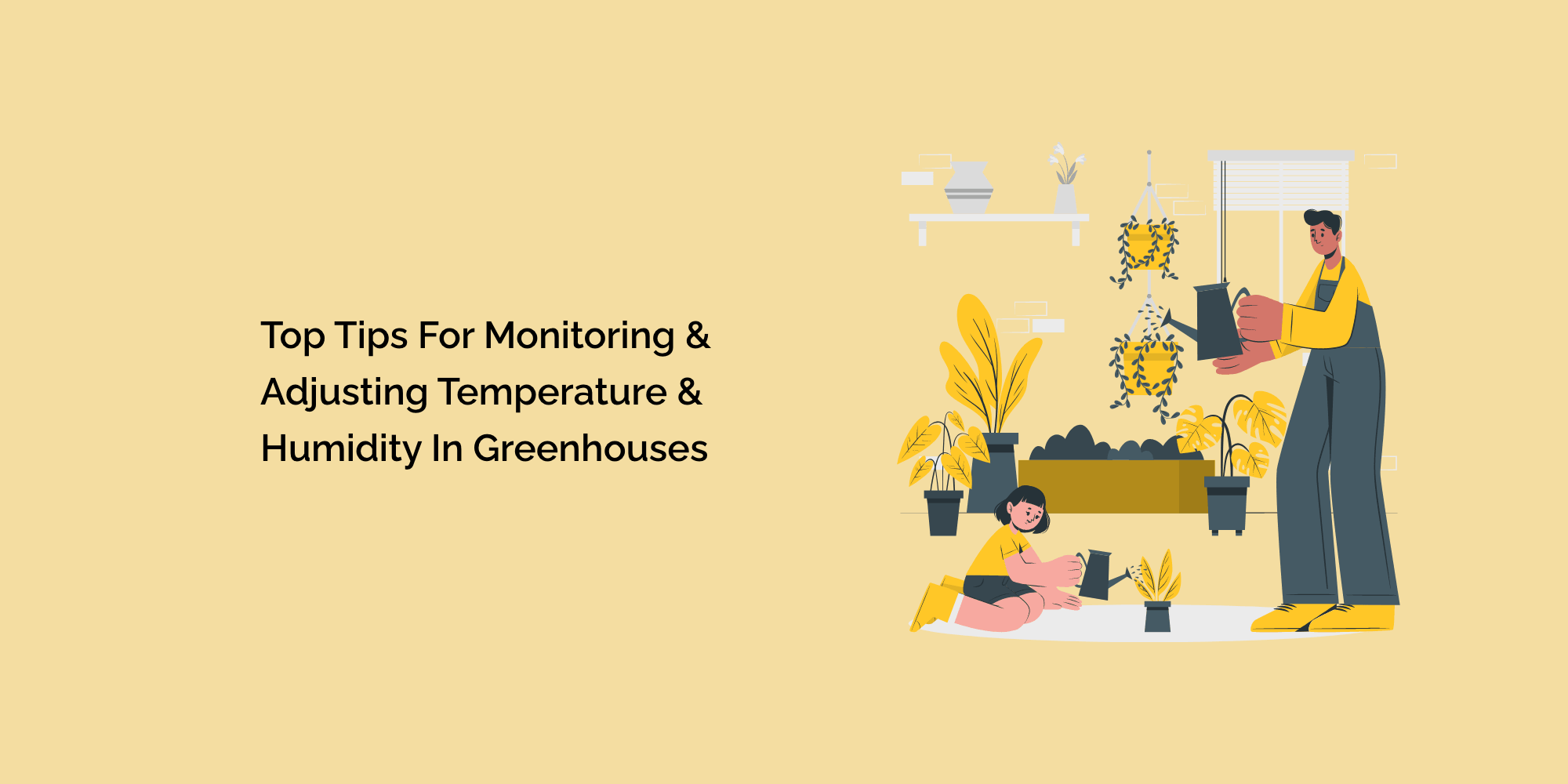Temperature and humidity are critical factors in greenhouse environments that directly impact plant growth, health, and productivity. Monitoring and adjusting these variables are essential for creating optimal growing conditions and maximizing crop yields. This comprehensive blog post will provide tips for effectively monitoring and changing temperature and humidity in greenhouses. By implementing these strategies, greenhouse operators can ensure a conducive environment for plants and optimize their greenhouse operations.
Install Reliable Monitoring Systems:
Installing reliable monitoring systems is crucial to monitor temperature and humidity in a greenhouse effect. Consider using sensors or probes designed explicitly for greenhouse environments. These sensors should be strategically placed to capture accurate data from various locations within the greenhouse. Invest in wireless or networked systems that allow real-time monitoring and provide easy access to data on temperature and humidity levels.
Set Optimal Temperature Ranges:
Different plants have specific temperature requirements for optimal growth and development. Research the temperature preferences of your cultivating crops and set appropriate temperature ranges within your greenhouse. During the day, most greenhouse crops thrive within a range of 65°F to 80°F (18°C to 27°C), with slightly cooler temperatures at night. Monitor and adjust the temperature regularly to maintain consistent conditions.
Implement Effective Ventilation:
Proper ventilation is essential for temperature and humidity control in a greenhouse. Install exhaust fans, vents, or louvers strategically to facilitate air exchange. This helps remove excess heat, prevent stagnant air pockets, and control humidity. Automated ventilation systems with temperature and humidity sensors can ensure precise control and adjust airflow based on set thresholds.
Utilize Shading Techniques:
Shading techniques can help regulate temperature and reduce plant heat stress during hot summers. Install shade cloths, reflective coatings, or retractable shade systems to block or diffuse excessive sunlight. These techniques help prevent overheating and maintain optimal temperature conditions within the greenhouse.
Employ Heating Systems:
During colder periods, it is crucial to have reliable heating systems in place to maintain the desired temperature range. Consider gas or electric heaters, radiant heating, or geothermal systems. Ensure proper insulation in the greenhouse to minimize heat loss and maximize energy efficiency. Automated temperature control systems can help maintain the desired temperature range efficiently.
Optimize Watering Practices:
Proper watering practices play a vital role in humidity control. Overwatering can increase humidity levels, while underwatering can lead to low humidity and water stress for plants. Implement efficient irrigation methods such as drip irrigation or automated systems that deliver water directly to the plant roots. Avoid excessive runoff and adjust watering schedules based on plant requirements and environmental conditions.
Use Humidifiers and Dehumidifiers:
Consider using humid or dehumidifiers in environments where humidity control is challenging to achieve optimal levels. Humidifiers release moisture to increase humidity, while dehumidifiers extract excess water to reduce humidity. These devices can be integrated into automated systems and controlled based on set humidity thresholds.
Monitor External Weather Conditions:
External weather conditions directly impact the internal climate of the greenhouse. Keep a close eye on external factors such as sunlight intensity, wind, and ambient temperature. Install weather sensors or access local weather forecasts to anticipate changes and adjust temperature and humidity control systems accordingly.
Implement Automated Control Systems:
Automated control systems offer precise control and reduce the manual effort required for temperature and humidity adjustments. These systems integrate sensors, fans, heaters, coolers, irrigation systems, and other components. They allow greenhouse operators to set the desired temperature and humidity ranges, program schedules, and receive alerts or notifications when conditions deviate from the set thresholds.
Regularly Monitor and Analyze Data:
Continuous monitoring and analyzing temperature and humidity data are crucial for understanding trends and making informed decisions. Utilize data analysis tools or software to visualize the collected data and identify patterns or anomalies. Regularly review the data to assess the effectiveness of your temperature and humidity control strategies and make necessary adjustments.
Certainly! Here are some frequently asked questions (FAQs) about monitoring and adjusting temperature and humidity in greenhouses:
Can I automate temperature and humidity control in my greenhouse?
Yes, automation systems can control temperature and humidity in a greenhouse. These systems integrate sensors, fans, heaters, coolers, and other components to provide precise control and minimize manual effort. Automated control systems can be programmed to maintain specific temperature and humidity setpoints and adjust accordingly based on environmental conditions.
How often should I monitor the temperature and humidity in my greenhouse?
Temperature and humidity monitoring frequency depend on various factors, including specific crop requirements, external weather conditions, and the level of automation in your greenhouse. However, as a general recommendation, monitoring should be done regularly throughout the day, especially during significant temperature or humidity fluctuations.
What should I do if temperature or humidity levels deviate from the desired range?
If temperature or humidity levels deviate from the desired range, it is essential to take appropriate actions to restore optimal conditions. This may involve adjusting ventilation systems, increasing or decreasing heating or cooling, utilizing shading techniques, or adjusting irrigation practices. Regular monitoring and data analysis will help identify trends and patterns, enabling proactive interventions.
Conclusion:
Effective monitoring and adjustment of temperature and humidity are essential for successful greenhouse operations. These top tips allow greenhouse operators to create optimal growing conditions and maximize crop yields. Install reliable monitoring systems, set appropriate temperature ranges, implement adequate ventilation and shading techniques, employ heating and irrigation systems, and utilize humidifiers or dehumidifiers. Incorporating automated control systems and regularly monitoring and analyzing data will help fine-tune temperature and humidity control in the greenhouse. With careful attention to these factors, greenhouse operators can provide a conducive environment for plants, ensuring their healthy growth, productivity, and overall success.








